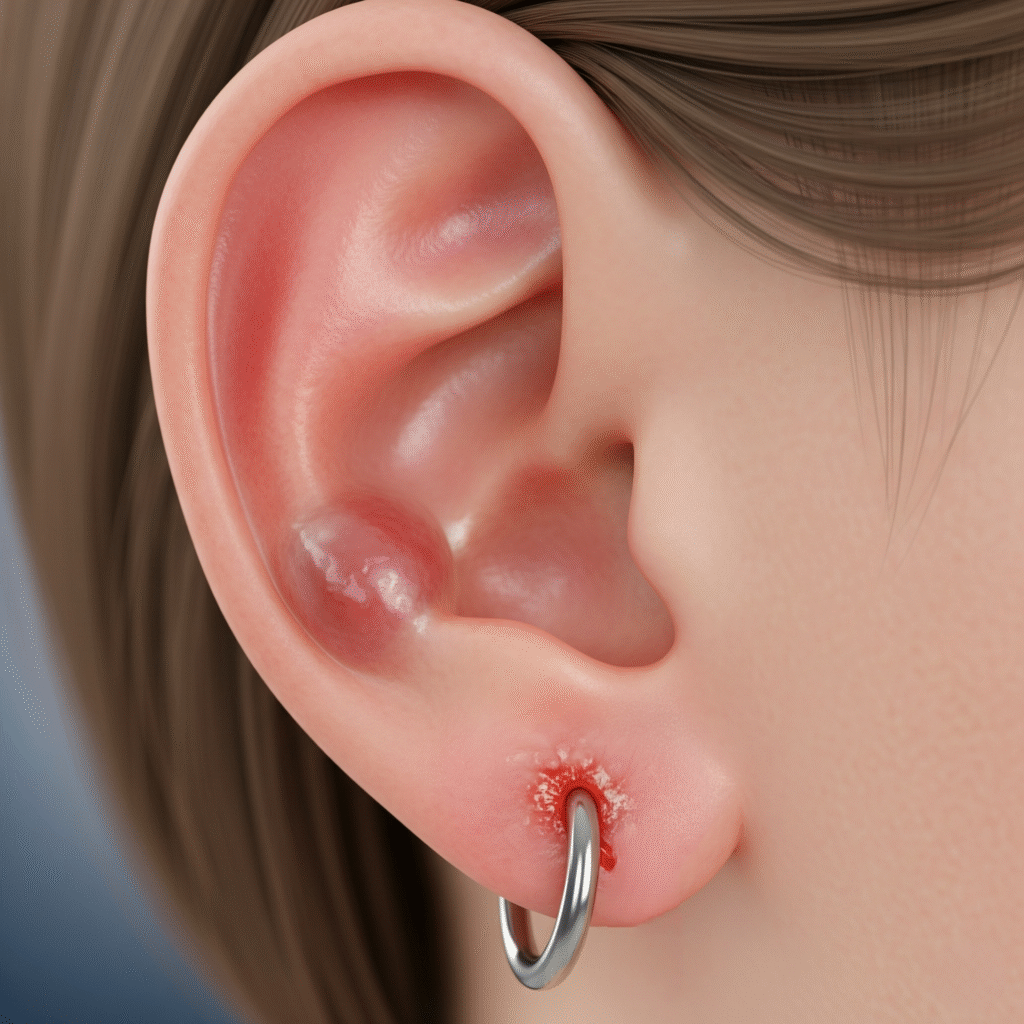1- Nickel-Free Options: Opt for earrings labeled as nickel-free or opt for alternative metals like platinum or titanium.
2- Sterling Silver and Gold: Genuine sterling silver and 14k gold are generally safe choices.
3- Silicone or Plastic: Consider alternatives like silicone or plastic, which are also gentle on sensitive skin.
4- Sterilization: Always ensure your earrings are sterilized before use to prevent infections.
The Importance of Cleaning Your Earrings
Maintaining cleanliness is paramount in preventing infections and ear inflammation. Earrings can accumulate dirt, dead skin cells, and bacteria, which can irritate once in contact with the skin. A regular cleaning routine can mitigate this risk.
“The secret to comfortable earring wear lies not just in material choice, but also in meticulous cleaning.” – Jewelry Expert Jane Doe
Cleaning your earrings involves gentle scrubbing with mild soap and water, followed by thorough drying. For metal earrings, a rubbing alcohol cleanse can further sterilize the surfaces, ensuring harmful pathogens are eliminated.
Proper Techniques for Wearing Earrings
Now that you have selected the right materials and ensured cleanliness, it’s crucial to apply the best practices for wearing earrings:
– Ease into Wearing New Earrings: Avoid wearing new earrings for extended periods initially. This helps your ears adjust gradually.
– Monitor for Reactions: When wearing earrings made from a new material, keep an eye on any adverse reaction.
– Correct Earring Placement: Ensure that the earring’s clasp or back is not too tight, as this can irritate your earlobe.
– Limit Duration: If possible, limit how long you wear earrings, especially if they are heavy or new.
By adhering to these guidelines, you can enhance comfort and minimize the risk of inflammation.
Common Misconceptions About Earrings and Ear Inflammation
Several misconceptions exist regarding earring usage and ear health:
1. All Earrings Cause Pain: Not all earrings result in discomfort; material and fit play significant roles.
2. Infections Are Inevitable: Infections are preventable with proper hygiene practices.
3. Regular Cleaning is Unnecessary: Routine cleaning significantly reduces the risk of adverse reactions.
4. Only Metal Earrings Are Problematic: Non-metal earrings can also cause issues if not maintained or worn properly.
It’s essential to dispel these myths to better understand how to wear earrings safely without compromising comfort.
Signs of Ear Infection and When to Seek Medical Attention


Despite best efforts, sometimes infections, unfortunately, occur. Recognizing the signs early and seeking timely intervention can prevent complications:
– Redness and Swelling: Persistent redness or noticeable swelling are early signs of inflammation.
– Pain and Tenderness: Discomfort that escalates over time may require medical attention.
– Discharge: Any pus or unusual discharge from the piercing site is a clear indication of infection.
– Fever or Ongoing Symptoms: If you experience fever or symptoms persist beyond a few days, consult a healthcare provider.
Professional evaluation will aid in diagnosing the issue accurately and administering appropriate treatment swiftly.
Innovative Earring Choices for Sensitive Ears
For those with sensitivity, innovative earring designs and materials provide stylish yet safe options:
– Clip-Ons: Eliminates the risk of piercing-related issues entirely.
– Magnetic Earrings: A non-invasive yet fashionable alternative.
– Hinged Hoops or Sleeper Earrings: Lightweight and designed to reduce pressure on the earlobes.
– Clear Plastic Earrings: Especially useful for keeping piercings open without risking metal allergies.
Considering these alternatives may offer relief and prevent recurring ear inflammation.
FAQ – Dúvidas Comuns
What is the most common cause of earring-related ear inflammation?
The most prevalent cause is an allergic reaction to nickel, found in many metal alloys used for earrings.
How often should I clean my earrings?
Ideally, clean earrings before every wear, especially if they have not been worn recently.
Can wearing too heavy earrings cause ear inflammation?
Yes, heavy earrings can strain the earlobes, leading to discomfort and potential inflammation.
What materials are best for hypoallergenic earrings?
Platinum, titanium, and 14k gold are excellent hypoallergenic choices.
Should I remove earrings if I notice a reaction?
Yes, immediately remove the earrings and clean both your ear and the earrings. Consult a healthcare provider if symptoms persist.
👉 Wearing earrings without inflammation is attainable through careful selection of materials, diligent cleaning, and proper usage techniques. Understanding the root causes and implementing best practices can significantly reduce the chances of experiencing discomfort or allergic reactions. With the knowledge presented in this guide, you are well-equipped to enhance your earring-wearing experience without the unpleasant side effects of ear inflammation.




